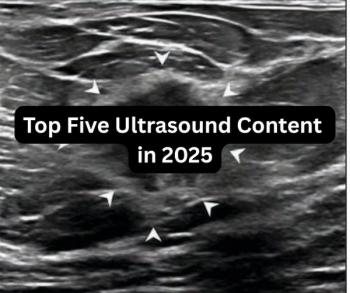
Emerging PET/CT Agent May Enhance Diagnosis for Smaller Lesions of Clear Cell Renal Cell Carcinoma
For cT1 renal masses < 4 cm and renal masses < 2 cm, the PET/CT agent 89Zr-DFO-girentuximab had respective sensitivity rates of approximately 85 percent and 96.7 percent for diagnosing clear cell renal cell carcinoma, according to research recently presented at the European Association of Nuclear Medicine (EANM) 2023 Congress.
Given the challenges in detecting malignant clear cell renal cell carcinoma (ccRCC) with conventional anatomic imaging and estimates that between 20 to 30 percent of resected small renal masses are benign, a non-invasive alternative is needed to detect and characterize these lesions.
The positron emission tomography/computed tomography (PET/CT) agent 89Zr-DFO-girentuximab (Telix Pharmaceuticals) may provide a viable imaging alternative for detecting smaller lesions of ccRCC, according to research from the ZIRCON study, which was presented at the recent European Association of Nuclear Medicine (EANM) 2023 Congress in Vienna, Austria.
Researchers found that 89Zr-DFO-girentuximab had an 84.98 percent sensitivity rate and 89.51 specificity rate for the detection of ccRCC in lesions < 4 cm. The IgG1 kappa light chain chimeric monoclonal antibody also demonstrated a 93.19 positive predictive value (PPV) and an 86.67 accuracy rate for these lesions.
For smaller renal masses < 2 cm, 89Zr-DFO-girentuximab had 96.7 percent sensitivity and specificity rates for ccRCC as well as a 96.7 percent accuracy rate, according to study co-author Clement Bailly, M.D., Ph.D., who is affiliated with the Department of Nuclear Medicine at Nantes University Hospital in Nantes, France.
In an interview earlier this year at the
“(89Zr-DFO-girentuximab) really provides a great tool for patients with indeterminate mass in the kidney. From seven centimeters to four centimeters to two centimeters, you still keep these good characterization properties,” noted Dr. Calais, an associate professor at the Ahmanson Translational Theranostics Division of the Department of Molecular and Medical Pharmacology at the University of California Los Angeles (UCLA).
(Editor’s note: For related content, see “
The study researchers added that 89Zr-DFO-girentuximab has a favorable safety profile. In his EANM presentation, Dr. Bailly noted there were few adverse events (AEs) in the ZIRCON trial that may have been related to the imaging agent and he said most of these AEs were mild.
Reference
1. Mulders P, Shuch BM, Pantuck AJ, et al. 89Zr-DFO-girentuximab PET/CT imaging for clear cell renal cell carcinoma – ZIRCON study results of diagnostic performance, including in very small lesions. Poster abstract presented at the 36th Annual Congress of the European Association of Nuclear Medicine (EANM), September 9-13, 2023, Vienna, Austria. Available at:
Newsletter
Stay at the forefront of radiology with the Diagnostic Imaging newsletter, delivering the latest news, clinical insights, and imaging advancements for today’s radiologists.




























